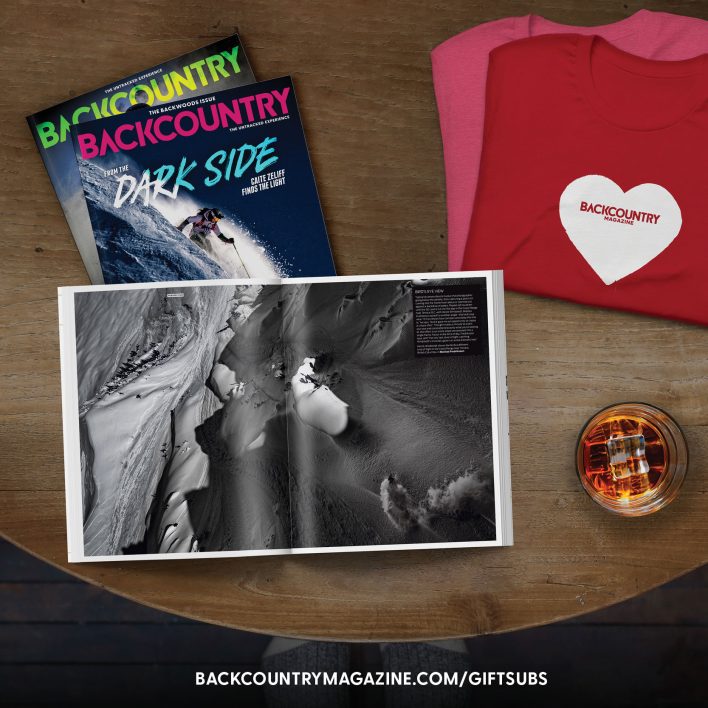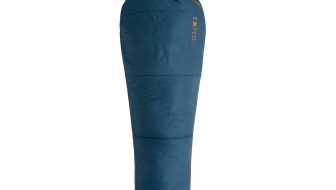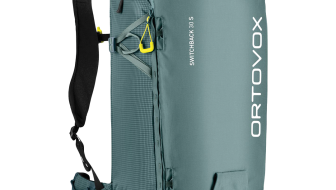“I kinda wear a few hats,” Keith Reid says quietly between sips of coffee. The Whistler-based mountain guide is a senior examiner for the Association of Canadian Mountain Guides. He’s the ACMG’s President, too. And beginning this winter, he became supervisor and lead guide for Whistler/Blackcomb’s new resort-accessed touring program, run buy Extremely Canadian.
Dehydrated and tired after instructing a four-day aspirant ski-guide course, Reid sat down with Backcountry Managing Editor Tyler Cohen in a Whistler coffee shop to talk lift-accessed touring, the Spearhead Hut Project and hamburgers.

Guide, educator, examiner, ACMG President: Keith Reid wearing one of his many hats. [Photo] T.H. Jackson Huang
Keith Reid: It’s almost easier to work backward to be honest. The growth is phenomenal, if not ridiculous. If I were to guess, it seems like about 30 percent growth of people in the backcountry this year from last, and I would say the same for the last three years preceding that.
What’s driving that? More than anything else it’s a maturing of the community to a realization that [backcountry skiing] is actually possible and it’s really cool. All the equipment aside just made it way more easy for everybody.
BCM: Has there been correlation between the growth in the backcountry and the hiring of guides and enrollment in avalanche courses?
KR: The amount of AST [Avalanche Skills Training] courses running now….the growth is only matched by the number of people going out there. And the amount of people hiring guides and getting out there for sure has grown. Our program [with Extremely Canadian] is running seven days a week. Our growth has been pretty phenomenal.
The amount of snowboarders is the most baffling thing to me. I don’t have stats on it but 25 percent of the people we take out are on splitboards. It’s way, way more than I would have ever expected.
BCM: Can you give me some background on the Extremely Canadian backcountry program?KR: Peter Smart [one of Extremely Canadian’s cofounders] and I spent a couple years chipping away trying to get Whistler Blackcomb sparked up to the idea. We needed to get permits in place and insurance in place. Finally it just came to a head and off it went.
BCM: Seems like opportune timing….
KR: Yeah. It’s definitely opportune timing. One thing we’re really trying to do is take the Extremely Canadian edict, which is to challenge people through the terrain and teach them through it, and take that into the backcountry. By embracing the edict, we’re using a lot more of the terrain that’s out there that hasn’t been traditionally used in ski touring.
BCM: Are most of your clients visitors to the area?
KR: I would say most are. I’m really surprised on how many locals we get, for whatever reason. Guiding isn’t new here, but you’ve got to give the milk crate a shove. People want to try it [ski touring]. We get a lot of people from Vancouver, a lot of people from eastern Canada, and a lot of Europeans.
BCM: How does lift-accessed guiding differ between Canada and the U.S.?
KR: The mountain guide scene in the U.S. is really challenged. When I apply for a park permit, I pay my $300 or whatever that gives me the opportunity to guide in all the provincial parks in B.C., Crown Land, National Parks…. In the U.S., the whole process is very different. The land managers, they give it to a company, and you’re the only guides that can guide there.
BCM: What can you tell me about the Spearhead Hut Project? Any updates?
KR: I was on the original committee, but I’m way too busy to be involved now. They have to first gain support of the provincial park for it to move forward. The provincial park just rewrote their mandates, and it’s in favor of providing huts. There’s still environmental hoops that have to be jumped through before it gets to a point where we start to generate a whole stack of dough and start building.
And half or a third of the Spearhead is heli-ski tenure. And alpine ski-touring huts? Well, that’s a bit like oil and vinegar to say the least. That is still being figured out because Parks [Canada] has accepted heli skiing for another term—four or five years—and they feel, at this time, it’s not a compromise environmentally or a compromise to other users in the park.
BCM: From your perspective though, are the huts something you support and want to see happen?
KR: If there ever was a no-brainer, it’s putting huts in the Spearhead. It’s already heavily used; it’s perfect terrain; it’s lift-accessed terrain. Each one of those huts would be a hub of a heck of a lot of skiing. I think it’s a super healthy thing for Parks in general to take on, because once they’ve got huts, not only can they get more financial support for that park, but getting people into the mountains will create more support for preservation. I think it will have a good snowball effect.
BCM: Seems like a lot of wild stuff will happen here in the next five to 10 years….
KR: People are skiing more radical things and doing more radical things. But I think it’s slowly sorting itself out, and it might get more dangerous or it may do the opposite.
BCM: Anything else you want to add?
KR: Umm…. A hamburger? [Pauses] What I’m seeing happen in the backcountry…it’s a little bit like if you look at mountain biking 10 years ago. You would never imagine it is what it is today. I don’t know what the backcountry is going to look like 10 years from now, but it’s gonna look a lot different than it does right now, and it’s exciting to see.
SOURCE:
Extremely Canadian Backcountry Adventures
Lift-Accessed Touring in Whistler, B.C.
extremelycanadian.com
Spearhead Hut Project
spearheadhuts.org
T.H. Jackson Huang Photography
jacksonhuang.com











Related posts: